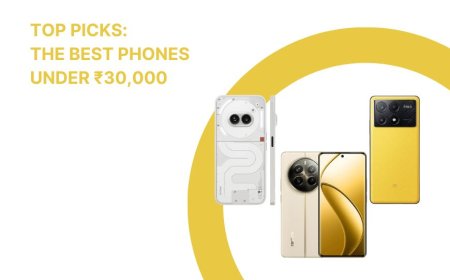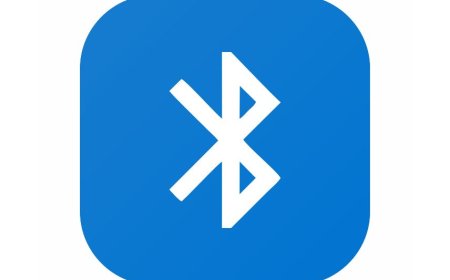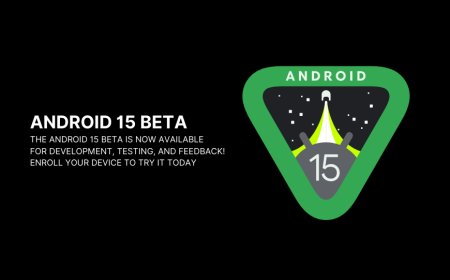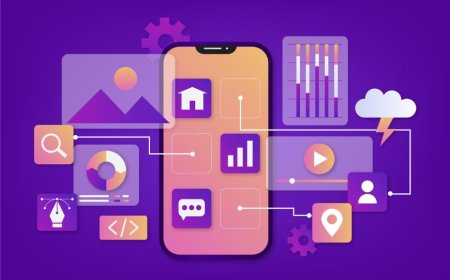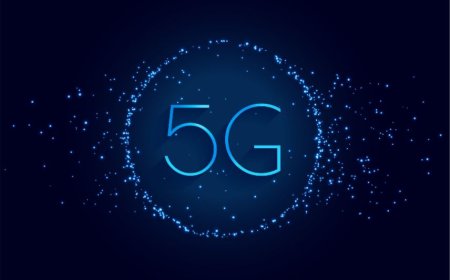Exploring the Latest Laptop Trends: What's New?
Get a glimpse of the latest laptop trends with Tectoks. Stay in the loop and explore what's new in the fascinating world of laptops.
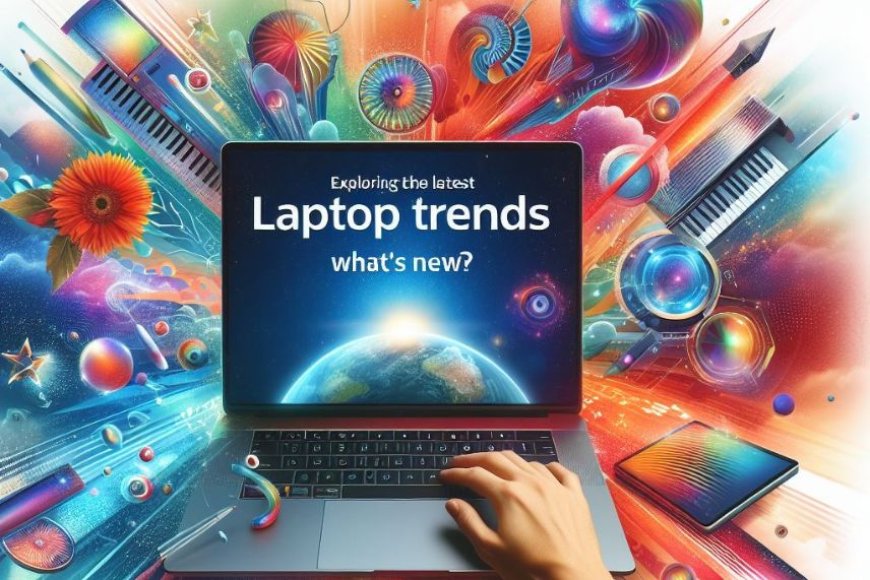
Table of contents:
I. Introduction
II. Dual-Screen OLED Laptops
III. Haptic Trackpads
IV. New Graphics Options
V. E-Ink Prism Technology
VI. New Laptop Technology
VII. Conclusion
I. Introduction
The laptop industry is one of the most dynamic and innovative sectors in the world of technology. Every year, new models, features, and designs are introduced to the market, offering consumers a wide range of options and possibilities. Whether you are a student, a professional, a gamer, or a casual user, staying current with the latest laptop trends can help you make the best choice for your needs and preferences. In this blog post, we will explore some of the most exciting and noteworthy laptop trends in 2024 and how they can enhance your computing experience.
II. Dual-Screen OLED Laptops
One of the most eye-catching and futuristic laptop trends in 2024 is the dual-screen OLED laptop. OLED stands for organic light-emitting diode, a type of display technology that produces vibrant colors, deep blacks, and high contrast ratios. OLED displays are also thinner, lighter, and more energy-efficient than traditional LCDs. A dual-screen OLED laptop features two OLED screens, one as the main display and one as the secondary display. The secondary display can be used for various purposes, such as multitasking, gaming, media consumption, or as a virtual keyboard.
Some of the popular models of dual-screen OLED laptops in 2024 are:
-
Asus ZenBook Pro Duo 15 OLED: This laptop features a 15.6-inch 4K OLED main display and a 14-inch 4K OLED secondary display, both with touch support. It also comes with a stylus pen, a dedicated GPU, and a powerful processor. It is ideal for creative professionals, gamers, and power users who need a lot of screen real estate and performance.
-
Lenovo ThinkBook Plus Gen 2: This laptop features a 13.3-inch QHD OLED main display and a 12-inch E-Ink display on the lid, which can be used as a secondary screen when the laptop is closed. It also has a fingerprint scanner, a webcam shutter, and a long battery life. It is ideal for business users, students, and travelers who need a versatile and portable laptop.
-
HP Elite Dragonfly Max: This laptop features a 13.3-inch FHD OLED main display and a 5.5-inch OLED secondary display on the keyboard deck, which can be used as a touchpad, a number pad, or a quick access panel. It also has a webcam with a physical privacy switch, a noise-canceling microphone, and a durable design. It is ideal for remote workers, video conferencing, and security-conscious users who need a reliable and secure laptop.
The benefits of dual-screen OLED laptops are:
-
They offer more flexibility and functionality than single-screen laptops, as they allow users to customize their workflow and optimize their productivity.
-
They provide a stunning visual experience, as OLED displays deliver superior image quality, color accuracy, and brightness.
-
They are more innovative and futuristic, as they showcase the cutting-edge technology and design of the laptop industry.
The challenges of dual-screen OLED laptops are:
-
They are more expensive than single-screen laptops, as OLED displays and dual-screen technology are still relatively new and costly.
-
They are heavier and bulkier than single-screen laptops, as they have to accommodate two screens and additional hardware.
-
They have shorter battery life than single-screen laptops, as OLED displays and dual-screen technology consume more power.
III. Haptic Trackpads
Another laptop trend that is gaining popularity in 2024 is the haptic trackpad. Haptic technology is a type of technology that simulates the sense of touch by creating vibrations, forces, or motions. A haptic trackpad is a trackpad that uses haptic technology to provide tactile feedback to the user, such as clicks, bumps, or textures. A haptic trackpad differs from a traditional trackpad in that it does not have any physical buttons or moving parts but rather relies on sensors and actuators to create the illusion of physical interaction.
Some of the advantages of haptic trackpads are:
-
They offer a more natural and intuitive user experience, as they mimic the feeling of using a real mouse or keyboard.
-
They are more responsive and accurate, as they can detect the pressure, position, and gesture of the user’s fingers.
-
They are more durable and reliable, as they do not have any mechanical components that can wear out or break.
Some of the disadvantages of haptic trackpads are:
-
They are more expensive than traditional trackpads, as haptic technology is still relatively new and complex.
-
They are more dependent on software and drivers, as they require compatible and updated software and drivers to function properly.
-
They are more subjective and variable, as different users may have different preferences and expectations for haptic feedback.
Some of the laptops that will feature haptic trackpads in 2024 are:
-
Apple MacBook Pro 16-inch: This laptop features a 16-inch Retina display, a powerful processor, and a dedicated GPU. It also has a touch bar, a fingerprint scanner, and a Force Touch trackpad, which is a type of haptic trackpad that can sense the force of the user’s touch and provide different levels of feedback.
-
Dell XPS 13 2-in-1: This laptop features a 13.4-inch FHD+ touch display, a flexible hinge, and a long battery life. It also has a MagLev keyboard, which is a type of haptic keyboard that uses magnets to create a clicky and responsive feel.
-
Razer Blade Stealth 13: This laptop features a 13.3-inch QHD+ touch display, a gaming-grade processor, and a discrete GPU. It also has a Razer Chroma keyboard, which is a type of haptic keyboard that uses RGB lighting to create a colorful and immersive experience.
IV. New Graphics Options
Graphics technology is one of the most important and influential aspects of laptop performance and quality. Graphics technology refers to the hardware and software that are responsible for rendering and displaying images, videos, games, and other visual content on the laptop screen. Graphics technology has evolved significantly over the years, offering users more options and possibilities in 2024.
Some of the latest graphics options in 2024 are:
-
Intel Xe Graphics: This is a new generation of integrated graphics from Intel, which is the leading manufacturer of laptop processors. Intel Xe Graphics are designed to deliver improved performance, efficiency, and features for laptops, especially for thin and light models. Intel Xe Graphics can support 4K resolution, HDR, ray tracing, and AI-enhanced applications.
-
Nvidia GeForce RTX 30 Series: This is a new series of discrete graphics from Nvidia, which is the leading manufacturer of laptop GPUs.The Nvidia GeForce RTX 30 Series is based on the Ampere architecture, which is the successor of the Turing architecture. Nvidia GeForce RTX 30 Series offers enhanced performance, power, and features for laptops, especially for gaming and creative models. Nvidia GeForce RTX 30 Series can support 8K resolution, DLSS, ray tracing, and VR applications.
-
AMD Radeon RX 6000 Series: This is a new series of discrete graphics from AMD, which is the main competitor of Nvidia in the laptop GPU market. The AMD Radeon RX 6000 Series is based on the RDNA 2 architecture, which is the successor of the RDNA architecture. AMD Radeon RX 6000 Series offers competitive performance, efficiency, and features for laptops, especially for gaming and professional models. AMD Radeon RX 6000 Series can support 4K resolution, FSR, ray tracing, and VR applications.
The impact of these new graphics options on laptop performance and usage is:
-
They enable users to enjoy higher-quality and smoother visual content, such as movies, photos, games, and animations.
-
They allow users to run more demanding and complex applications, such as video editing, 3D modeling, and machine learning.
-
They increase the versatility and functionality of laptops, as they can support different modes and scenarios, such as dual-screen, VR, and cloud gaming.
V. E-Ink Prism Technology
E-Ink Prism technology is a new and innovative technology that is being integrated into some laptops in 2024. E-Ink Prism technology is a type of technology that uses electronic ink, or e-ink, to create dynamic and customizable surfaces. E-ink is a type of display technology that uses tiny particles of black and white pigment to create images that resemble printed paper. E-ink displays are known for their low power consumption, high contrast, and wide viewing angles. E-Ink Prism technology takes e-ink to the next level by allowing it to change colors, shapes, and patterns according to the user’s preferences and needs.
Some of the applications and examples of E-Ink Prism technology in laptops are:
-
Lenovo ThinkBook Plus Gen 2: As mentioned earlier, this laptop features a 12-inch E-Ink display on the lid, which can be used as a secondary screen when the laptop is closed. The E-Ink display can also use E-Ink Prism technology to change its appearance and functionality, such as showing different wallpapers, widgets, notifications, or modes.
-
HP Spectre Folio: This laptop features a 13.3-inch FHD touch display, a leather cover, and a flexible hinge. It also has an E-Ink keyboard, which is a type of keyboard that uses E-Ink Prism technology to create different layouts, languages, and shortcuts. The E-Ink keyboard can also adapt to the user’s typing habits and preferences, such as changing the size, shape, and color of the keys.
-
Asus ZenBook Flip 14: This laptop features a 14-inch FHD touch display, a 360-degree hinge, and a stylus pen. It also has an E-Ink touchpad, which is a type of touchpad that uses E-Ink Prism technology to create different functions, such as a calculator, a music player, or a handwriting pad. The E-Ink touchpad can also respond to the user’s gestures and commands, such as zooming, scrolling, or tapping.
The benefits of E-Ink Prism technology in laptops are:
-
They offer more personalization and customization than traditional laptops, as they allow users to change the look and feel of their devices according to their mood, style, or purpose.
-
They provide a more natural and comfortable user experience, as they mimic the appearance and texture of paper, which is easier on the eyes and the fingers.
-
They are more eco-friendly and energy-efficient than traditional laptops, as they use less power and produce less heat and light pollution.
The challenges of E-Ink Prism technology in laptops are:
-
They are more expensive than traditional laptops, as E-Ink Prism technology is still relatively new and rare on the market.
-
They are more limited and dependent on software and hardware compatibility, as they require specific and updated software and hardware to support their features and functions.
-
They are more prone to glitches and errors, as they rely on complex and sensitive technology that can malfunction or break down.
VI. New Laptop Technology
In addition to the laptop trends discussed above, some other advancements and innovations are shaping the laptop industry in 2024.
Some of these new laptop technologies are:
-
Battery life and power efficiency: One of the most important and challenging aspects of laptop performance and quality is battery life and power efficiency. Laptops in 2024 are expected to have longer battery life and lower power consumption, thanks to improvements in processor, display, and battery technology.
-
Some of the factors that contribute to better battery life and power efficiency are:
-
Intel Evo platform: This is a new platform from Intel that certifies laptops that meet certain standards of performance, responsiveness, battery life, and connectivity. Intel Evo laptops are powered by the 11th generation Intel Core processors, which are based on the Tiger Lake architecture. Intel Evo laptops can deliver up to 9 hours of battery life, fast charging, instant wake, and Wi-Fi 6 support.
-
AMD Ryzen 5000 Series: This is a new series of processors from AMD that are based on the Zen 3 architecture. AMD Ryzen 5000 Series processors are designed to offer high performance, efficiency, and features for laptops, especially for gaming and professional models. AMD Ryzen 5000 Series processors can support up to 8 cores and 16 threads, DDR4-3200 memory, and a PCIe 4.0 interface.
-
Solid-state batteries: This is a new type of battery technology that uses solid materials instead of liquid or gel electrolytes. Solid-state batteries are expected to offer higher energy density, a longer lifespan, faster charging, and safer operation than conventional lithium-ion batteries. Solid-state batteries are still in the development stage, but some companies, such as Samsung, Panasonic, and Toyota, are working on commercializing them for laptops and other devices.
-
Input methods: Another aspect of laptop innovation and quality is input methods, which refer to the ways that users interact with their devices. Laptops in 2024 are expected to have more diverse and advanced input methods, such as voice, gesture, and biometric recognition.
-
Some of the factors that contribute to better input methods are:
-
Voice recognition: This is a type of technology that allows users to control their laptops using their voice. Voice recognition technology has improved significantly over the years, thanks to advances in natural language processing, machine learning, and cloud computing. Voice recognition technology can enable users to perform various tasks, such as searching, dictating, translating, or launching applications, using voice commands or queries.
-
Gesture recognition: This is a type of technology that allows users to control their laptops using their hand or body movements. Gesture recognition technology has also improved significantly over the years, thanks to advances in computer vision, sensor technology, and artificial intelligence. Gesture recognition technology can enable users to perform various actions, such as scrolling, zooming, rotating, or selecting, using gestures or motions.
-
Biometric recognition: This is a type of technology that allows users to authenticate their laptops using their physical or behavioral characteristics. Biometric recognition technology has become more common and reliable over the years, thanks to advances in security, privacy, and accuracy. Biometric recognition technology can enable users to unlock their laptops, make payments, or access sensitive data using biometric features such as fingerprints, faces, iris, or voices.
VII. Conclusion
In conclusion, the laptop industry is undergoing rapid and remarkable changes in 2024, offering users more options and possibilities than ever before. Some of the key laptop trends in 2024 are dual-screen OLED laptops, haptic trackpads, new graphics options, and E-Ink Prism technology. These trends can enhance the functionality, performance, and quality of laptops, as well as the user experience and satisfaction. However, these trends also come with some challenges, such as cost, compatibility, and reliability, that need to be addressed and overcome. Therefore, users who are interested in buying or upgrading their laptops in 2024 should consider these trends carefully and wisely and choose the best laptop that suits their needs and preferences. The future of laptop technology is bright and exciting, and we can expect more innovations and breakthroughs in the coming years.
What's Your Reaction?









